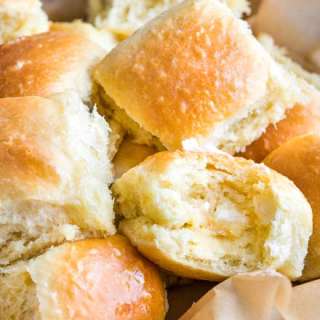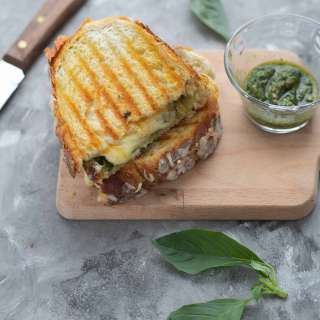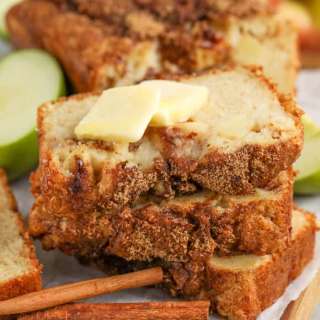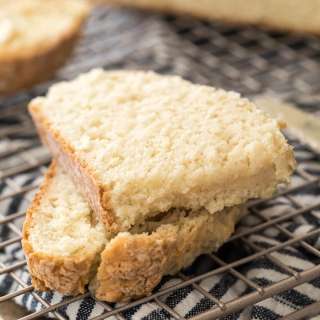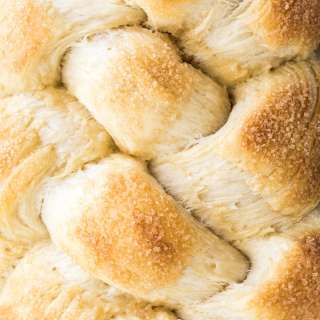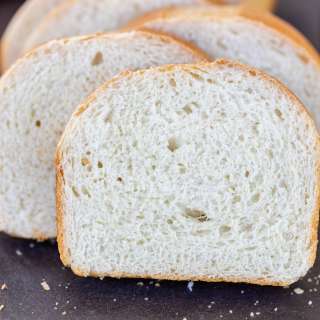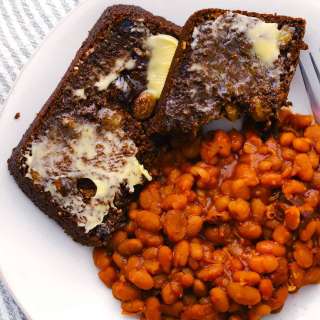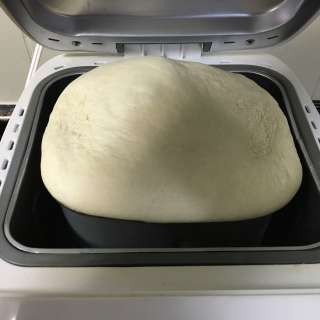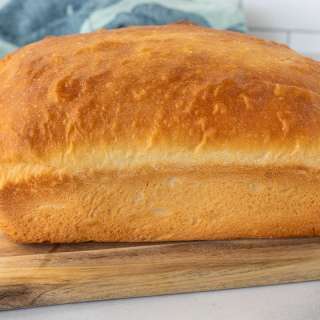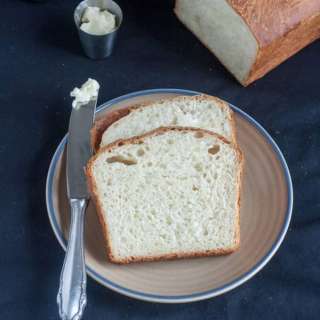
Ultimate Guide to Homemade Bread
User Reviews
5.0
15 reviews
Excellent

Ultimate Guide to Homemade Bread
Report
The Ultimate Guide to Homemade Bread starts with a classic base recipe and then covers all of the common substitutions to guide you in customizing your bread to your own needs so you can create your own perfect loaf.
Share:
Ingredients
- 2 1/4 cup milk
- 2 tablespoons granulated sugar
- 2 1/4 teaspoons instant dry yeast
- 1 tablespoon salt
- 3 tablespoons melted butter
- 5 1/2 to 6 cups all-purpose flour
Instructions
- In a microwave safe bowl or cup, warm the milk until it is warm to the touch, 100-110 degrees Fahrenheit.
- In the bowl of a stand mixer combine the milk, sugar, yeast, salt, melted butter, and 5 cups of flour. Knead on a low setting for 1 minute until combined, Slowly increase speed and add the remaining flour 1/4 cup at a time until the dough forms a smooth and elastic ball that is soft and tacky, but not sticky.
- Put the dough ball into a greased bowl, cover, and let rise for 90 minutes until double in size.
- After 90 minutes, divide the dough into two equal pieces. Roll or press each piece into a 9-inch by 7-inch rectangle. Roll each lengthwise into a tight roll and pinch the ends shut.
- Transfer each loaf into a lightly greased 9-inch by 5-inch bread loaf pan. Cover and let rise for an additional 60 minutes until double in size.
- Preheat an oven to 350 degrees. Bake bread for 35-40 minutes until golden brown.
- Remove the bread from the oven and let it cool in the pan for 10 minutes before removing the loaf from the pan and letting it cool completely.
Notes
- Milk changes bread recipes by producing a softer loaf, due to the milk fat content, which also gives bread a richer flavor. Bread made with milk browns more easily than bread made with water, as lactose or milk sugar will caramelize as it bakes.
- Butter has a lower smoke point than oil, meaning it will brown before oil will when baked. While butter and oil are interchangeable in the same amount when making bread, using butter does produce a better flavor.
- Honey and sugar are fairly interchangeable. You can replace sugar with honey in the same amount. Sugar replacements vary and usually come with instructions for substitution and what amounts to use.
- Wheat flour is heavier and more coarse than white flour and will produce a more dense bread. You can use all wheat, a combination of half wheat and half white flour, or use all white flour.
- This recipe calls for Instant Dry Yeast which requires no proofing time. If you choose to use active dry yeast in this recipe you can do so in the same quantity and proof the yeast by adding it to the warm milk along with the sugar and letting this mixture sit for 5 to 10 minutes before proceeding with the recipe.
- Water vs. Milk Milk changes bread recipes by producing a softer loaf, due to the milk fat content, which also gives bread a richer flavor. Bread made with milk browns more easily than bread made with water, as lactose or milk sugar will caramelize as it bakes.
- Oil vs. Butter Butter has a lower smoke point than oil, meaning it will brown before oil will when baked. While butter and oil are interchangeable in the same amount when making bread, using butter does produce a better flavor.
- Honey vs. Sugar vs. Sugar Replacement Honey and sugar are fairly interchangeable. You can replace sugar with honey in the same amount. Sugar replacements vary and usually come with instructions for substitution and what amounts to use.
- Wheat vs. White Wheat flour is heavier and more coarse than white flour and will produce a more dense bread. You can use all wheat, a combination of half wheat and half white flour, or use all white flour.
- Instant Dry Yeast vs. Active Dry Yeast This recipe calls for Instant Dry Yeast which requires no proofing time. If you choose to use active dry yeast in this recipe you can do so in the same quantity and proof the yeast by adding it to the warm milk along with the sugar and letting this mixture sit for 5 to 10 minutes before proceeding with the recipe.
Nutrition Information
Show Details
Serving
0.75inch slice
Calories
138kcal
(7%)
Carbohydrates
24g
(8%)
Protein
4g
(8%)
Fat
3g
(5%)
Saturated Fat
1g
(5%)
Cholesterol
6mg
(2%)
Sodium
314mg
(13%)
Potassium
72mg
(2%)
Fiber
1g
(4%)
Sugar
2g
(4%)
Vitamin A
80IU
(2%)
Calcium
31mg
(3%)
Iron
1.4mg
(8%)
Nutrition Facts
Serving: 2loaves
Amount Per Serving
Calories 138 kcal
% Daily Value*
| Serving | 0.75inch slice | |
| Calories | 138kcal | 7% |
| Carbohydrates | 24g | 8% |
| Protein | 4g | 8% |
| Fat | 3g | 5% |
| Saturated Fat | 1g | 5% |
| Cholesterol | 6mg | 2% |
| Sodium | 314mg | 13% |
| Potassium | 72mg | 2% |
| Fiber | 1g | 4% |
| Sugar | 2g | 4% |
| Vitamin A | 80IU | 2% |
| Calcium | 31mg | 3% |
| Iron | 1.4mg | 8% |
* Percent Daily Values are based on a 2,000 calorie diet.
Genuine Reviews
User Reviews
Overall Rating
5.0
15 reviews
Excellent
Other Recipes
You'll Also Love
Easy Unleavened Bread (Communion Bread Recipe) + Video
Mediterranean, American, Middle Eastern
5.0
(9 reviews)



